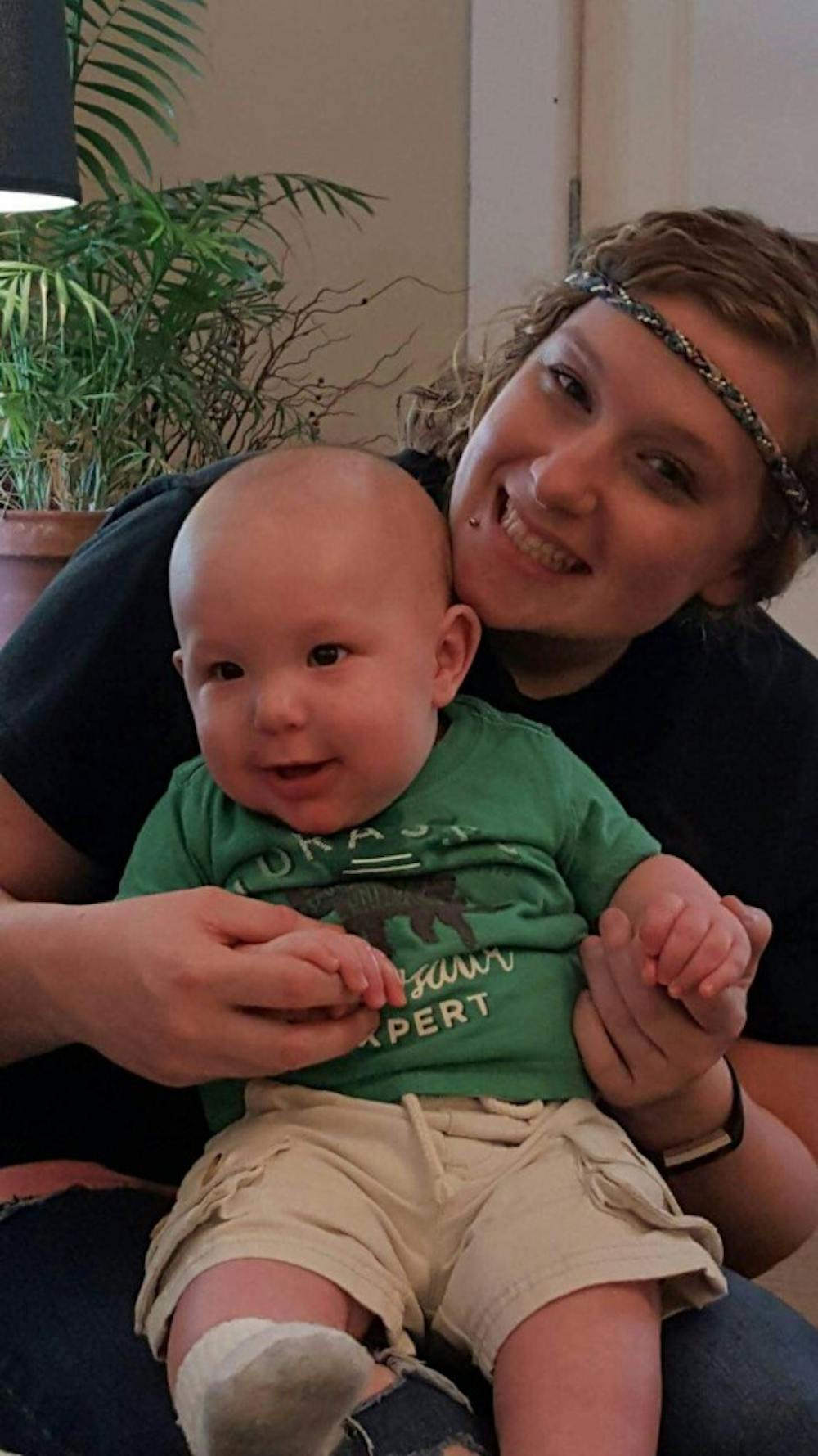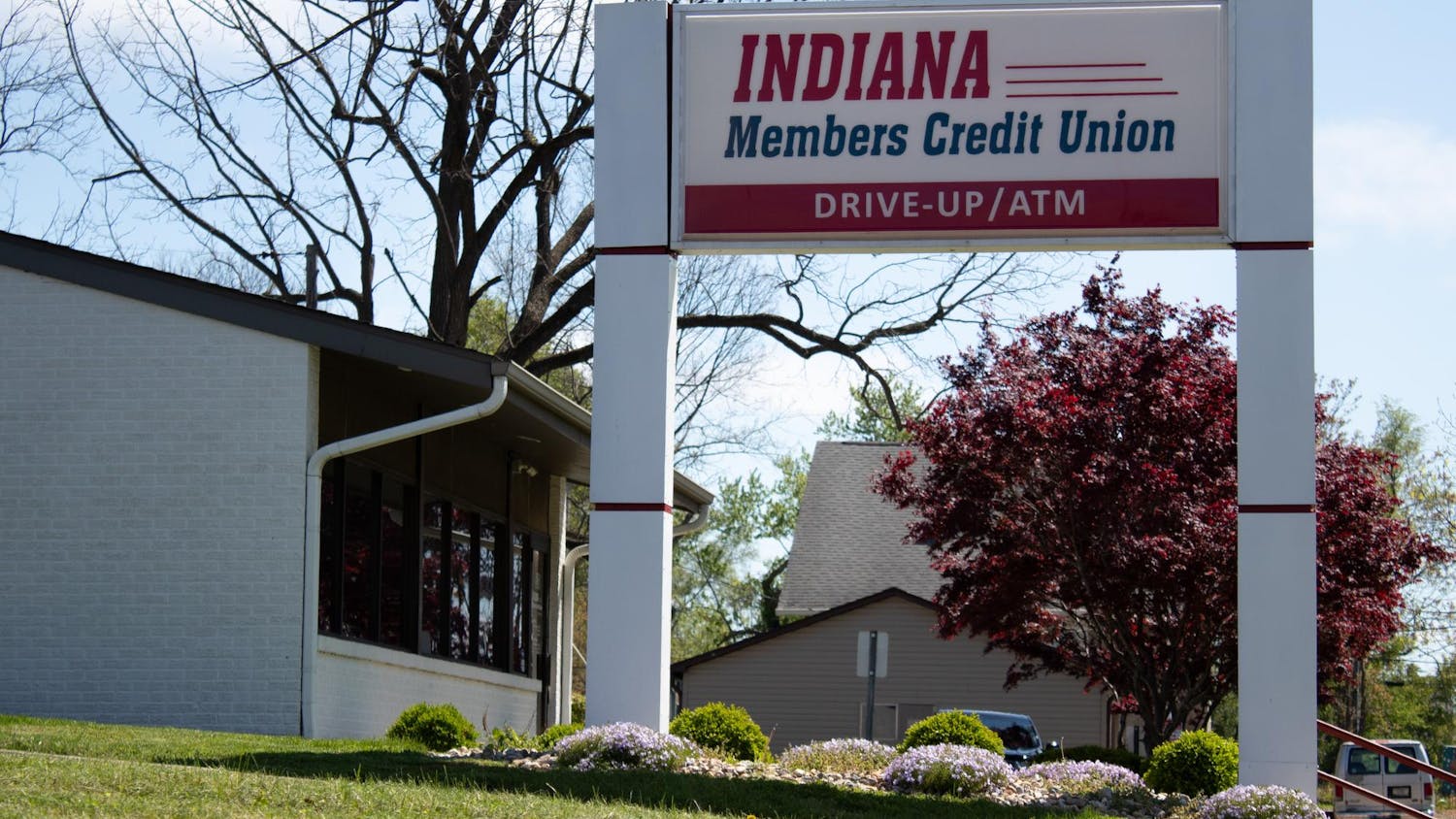HOPE, INDIANA — The baby in the backseat was crying.
That was one of the first things officers noticed when they got out of their car on Oct. 22 in the Dollar General parking lot. A 911 call had reported a woman who’d overdosed in her car.
The door of the gold Honda Accord hung open. Erika Hurt, 25, was slumped, unconscious, still wearing her seatbelt, still holding the needle. Her baby wailed.
The officers called the woman’s mother and stepmother, who got the baby out of the car. Paramedics used two doses of naloxone to revive Hurt.
Then the police did one more controversial but increasingly common thing. They looked at the woman and child in the car, took a picture and posted it online.
By Friday, the police department and the family had been attacked by strangers from around the world. The case was the newest face at the center of a national conversation: Does posting these photos deter drug use? Or does it needlessly exploit and shame people at their worst moment?
***
Early in September, two people in East Liverpool, Ohio, overdosed on heroin with a 4-year-old boy in the backseat. In an unusual move, officials posted a photo of the scene on the police department’s Facebook page.
“We feel we need to be a voice for the children caught up in this horrible mess,” the post read. “It is time that the non drug using public sees what we are now dealing with on a daily basis.”
Other photos soon followed. A woman in Elyria, Ohio, with an 8-month-old child in the car. A woman in Detroit with a 2 year-old and a 4 year-old in the backseat. And on Monday, the trend reached Hope.
Town Marshal Matthew Tallent made the decision to post the photo. Hope has not been hit as hard by opioid addiction as other places in the state. The town of 2,000 has seen only two overdoses this year. But heroin possession arrests have spiked, and Bartholomew County has seen 22 overdoses and two deaths.
His decision has been praised as public service and vilified as distasteful.
Tallent, who has been marshal for three years and on the police force for 19 years, said he did not want to embarrass Hurt, but felt it was the right moment to get the community thinking about ways to fight addiction.
“The public needs to start seeing what heroin is doing to our youth and to our men and women,” Tallent said. “If one person sees that picture and decides not to shoot up or decides to go into recovery, then it’s totally worth it.”
***
Jami Smith is Erika Hurt’s mother. She lives with Hurt and her son. The overdose, she said, came out of the blue.
That Saturday afternoon, she had just walked in the door when her phone rang. It was the police.
“Do you know Erika?”
“She’s my daughter.”
“Do you know where she is right now?”
“No.”
“I’m going to need you to come to the Dollar General.”
Minutes later, Smith was yelling at her unconscious daughter. She begged Erika to wake up.
“You’re going to go to jail,” Smith said to her. “And that’s probably where you need to be.”
She took the baby home while her daughter went to jail. A few days later, her neighbor told her to turn on the news. There on the TV was the image of her daughter she had tried so hard to get out of her head.
“They say it’s a teaching tool, but I say it’s exploiting her,” Smith said. “It’s just trying to bring big news to a small town.”
Messages on social media to Smith and Hurt came pouring in from all over the country — from Arkansas, Texas, New York.
“Too bad you didn’t die.”
“You need to rot in hell.”
“Everyone in that baby’s life has failed him.”
"You people are nothing but needle junkies yourself."
For days, nobody in the house could sleep. Their phones wouldn’t stop buzzing. Smith shut down their Facebook accounts.
Broadcast stations aired the photo and the news of the overdose with little context. No one ever wanted to know who Hurt really was — in the public eye, she was just the junkie mom passed out in the car.
There had been no reason to think Hurt was in danger of overdosing, Smith said. Hurt had been sober for more than two years. She loved her son dearly. She considered her mother her best friend. Just the weekend before, she spent the day with her mom and her son at a pumpkin patch.
It was clear that Hurt loved kids. During her senior year of high school, she organized a health fair and arranged for a doctor, a dentist and an optometrist to provide free screenings for poor children in the area. After graduating, she worked at a daycare.
Her drug use spiraled out of control after her father died on Christmas Eve 2013. Smith said her daughter was afraid. Smith did not let her live in the house when she was still regularly using heroin, but she could visit. One day, Hurt sat on the living room floor, stared at the wall and sobbed, saying she didn’t know how to make it end.
“If you don’t stop this,” Smith once told her daughter, “you are going to die.”
Hurt looked at her mother and said, “Then I’d be free from this drug.”
***
In releasing these photos, police say they intend to educate the community about the consequences of addiction. But does it work?
“If your goal is really to educate and enlighten, then you need more context than just this shocking photo,” said Kelly McBride, a media ethicist at the Poynter Institute. “I don’t see any extra steps being taken, which makes me seriously question whether people are just looking for clicks and sensationalism.”
A source invested in educating the public should also publish thorough coverage of the opioid crisis, McBride said. They should seek alternatives to publishing a sensational photo — at the very least, blurring or cropping the image to protect the identities of the adults and children in the picture.
“Police departments are overwhelmed and looking for solutions, and they often have the best of intentions when they want the public to understand what heroin can do,” McBride said. “But you have to ask yourself, does that potential benefit outweigh the harm done to these families?”
Matthew Tallent, Hope’s town marshal, said the photo and its aftermath has forced him to think harder about what Hope is doing to combat heroin. He wants to help churches start Narcotics Anonymous chapters. He wants to help addicts find affordable treatment.
Meanwhile, Smith has barely left her house for fear of being recognized as Hurt’s mother.
Holding her grandson Friday afternoon, she said she agrees something needs to be done in Hope and throughout the state to help people fight heroin. But it should start with love and support, she said, not hatred and shame.
Back in September, she had shared the image from the East Liverpool overdose on her own Facebook page, with the caption, “This truly breaks my heart.” She had shared it to get Hurt to see it, to warn her from ever returning to drug use.
Seven weeks later, it was her own daughter in a photo on Facebook. This was proof enough to Smith that such a photo couldn’t work as a teaching tool.
“The image never goes away,” Smith said. “When I think of my own daughter now, I don’t even see her face. I can only picture her in the front seat of that car, looking like she’s dead.”
***
Hurt is in jail, waiting to find out whether she will be placed in intensive drug treatment. She faces charges of possession of drug paraphernalia and child neglect.
For now, Smith stays home with her grandson. She currently has custody. She said she feels the need to teach people that addiction is a disease and that it can be fixed. But she said she knows the stigma against drug users and the lack of treatment options will be difficult to work around.
“I want to do something,” Smith said, “but I don’t know where to begin.”
She paused, then corrected herself.
“Yes, I do know where to begin,” she said. “I’ll begin with my daughter. I will stand by her and love her and get her the help she needs. And when I figure that out, I can help others, too.”




